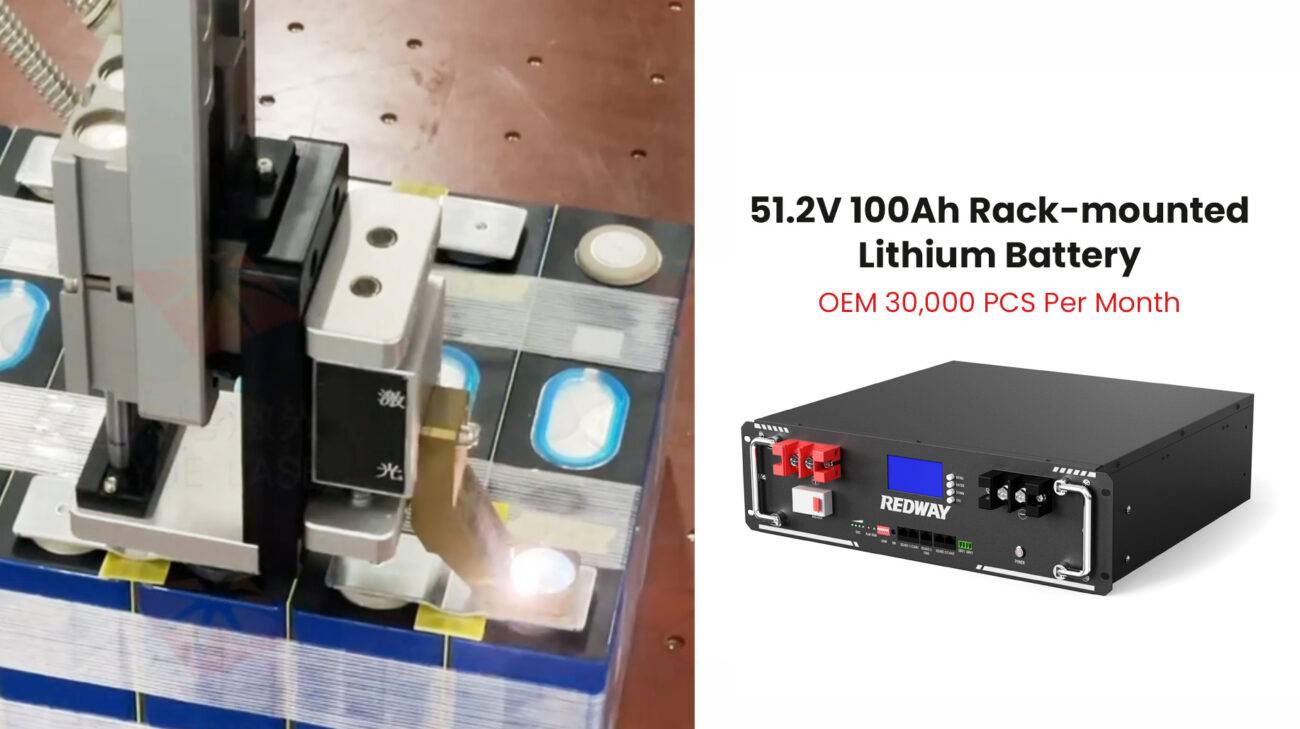- Lithium Golf Cart Battery
- Forklift Lithium Battery
-
48V
- 48V 210Ah
- 48V 300Ah
- 48V 420Ah (949 x 349 x 569 mm)
- 48V 420Ah (950 x 421 x 450 mm)
- 48V 456Ah
- 48V 460Ah (830 x 630 x 590 mm)
- 48V 460Ah (950 x 421 x 450 mm)
- 48V 460Ah (800 x 630 x 600 mm)
- 48V 460Ah (820 x 660 x 470 mm)
- 48V 500Ah
- 48V 560Ah (810 x 630 x 600 mm)
- 48V 560Ah (950 x 592 x 450 mm)
- 48V 600Ah
- 48V 630Ah
-
48V
- 12V Lithium Battery
12V 150Ah Lithium RV Battery
Bluetooth App | BCI Group 31
LiFePO4 Lithium
Discharge Temperature -20°C ~ 65°C
Fast Charger 14.6V 50A
Solar MPPT Charging - 24V Lithium Battery
- 36V Lithium Battery
- 48V Lithium Battery
-
48V LiFePO4 Battery
- 48V 50Ah
- 48V 50Ah (for Golf Carts)
- 48V 60Ah (8D)
- 48V 100Ah (8D)
- 48V 100Ah
- 48V 100Ah (Discharge 100A for Golf Carts)
- 48V 100Ah (Discharge 150A for Golf Carts)
- 48V 100Ah (Discharge 200A for Golf Carts)
- 48V 150Ah (for Golf Carts)
- 48V 160Ah (Discharge 100A for Golf Carts)
- 48V 160Ah (Discharge 160A for Golf Carts)
-
48V LiFePO4 Battery
- 60V Lithium Battery
-
60V LiFePO4 Battery
- 60V 20Ah
- 60V 30Ah
- 60V 50Ah
- 60V 50Ah (Small Size / Side Terminal)
- 60V 100Ah (for Electric Motocycle, Electric Scooter, LSV, AGV)
- 60V 100Ah (for Forklift, AGV, Electric Scooter, Sweeper)
- 60V 150Ah (E-Motocycle / E-Scooter / E-Tricycle / Tour LSV)
- 60V 200Ah (for Forklift, AGV, Electric Scooter, Sweeper)
-
60V LiFePO4 Battery
- 72V~96V Lithium Battery
- Rack-mounted Lithium Battery
- E-Bike Battery
- All-in-One Home-ESS
- Wall-mount Battery ESS
-
Home-ESS Lithium Battery PowerWall
- 24V 100Ah 2.4kWh PW24100-S PowerWall
- 48V 50Ah 2.4kWh PW4850-S PowerWall
- 48V 50Ah 2.56kWh PW5150-S PowerWall
- 48V 100Ah 5.12kWh PW51100-F PowerWall (IP65)
- 48V 100Ah 5.12kWh PW51100-S PowerWall
- 48V 100Ah 5.12kWh PW51100-H PowerWall
- 48V 200Ah 10kWh PW51200-H PowerWall
- 48V 300Ah 15kWh PW51300-H PowerWall
PowerWall 51.2V 100Ah LiFePO4 Lithium Battery
Highly popular in Asia and Eastern Europe.
CE Certification | Home-ESS -
Home-ESS Lithium Battery PowerWall
- Portable Power Stations
How Do Internal Resistance and State of Charge Impact Parallel Batteries?

Internal resistance and state of charge significantly affect the performance of batteries connected in parallel. Variations in internal resistance can lead to unequal current distribution, causing one battery to discharge faster than others. Additionally, differences in state of charge can exacerbate these issues, impacting overall efficiency and longevity. Understanding these dynamics is essential for optimizing battery systems.
The Dynamics of Parallel Battery Systems
Batteries connected in parallel are often used to increase capacity while maintaining voltage levels. However, understanding how internal resistance and state of charge impact these systems is crucial for ensuring optimal performance and longevity.
1. Internal Resistance Explained
Internal resistance refers to the opposition within a battery that hinders the flow of current. Each battery has its own unique internal resistance, which can be influenced by factors such as age, temperature, and chemistry.
| Factor | Impact on Internal Resistance |
|---|---|
| Age | Older batteries typically have higher resistance. |
| Temperature | High temperatures can lower resistance, while cold can increase it. |
| Chemistry | Different battery chemistries have varying internal resistances. |
When batteries with different internal resistances are connected in parallel, the one with lower resistance will tend to discharge more quickly, leading to uneven load sharing.
2. State of Charge (SoC)
State of charge indicates the current energy level of a battery compared to its total capacity. Batteries in parallel may have different states of charge due to variations in usage patterns or charging cycles.
| State of Charge (%) | Description |
|---|---|
| 100% | Fully charged; optimal performance |
| 50% | Moderate charge; may not perform optimally |
| 0% | Fully discharged; can lead to damage |
When batteries with different states of charge are connected in parallel, the one with a higher charge will attempt to equalize with the lower charged battery, causing unnecessary stress and potential damage.
3. Effects on Performance
The combination of varying internal resistances and states of charge can lead to several performance issues:
| Issue | Description |
|---|---|
| Uneven Discharge | Batteries may not discharge equally, leading to shorter overall runtime. |
| Reduced Lifespan | Increased cycling stress can shorten battery life. |
| Risk of Damage | Over-discharging or overcharging can occur if not monitored properly. |
Latest News
- Recent studies emphasize the importance of monitoring internal resistance in battery management systems for improved efficiency.
- Advances in battery technology are leading to smarter systems that can better manage state of charge across parallel configurations.
- Regulatory changes are promoting better practices for battery recycling and disposal, ensuring environmental sustainability.
Redway Expert Comment
“At Redway Power, we recognize that understanding the intricacies of internal resistance and state of charge is vital for optimizing battery performance in parallel configurations. Our expertise in Lithium LiFePO4 technology allows us to provide solutions that mitigate these issues, ensuring reliability and longevity for our customers’ energy needs.”
Internal resistance affects how efficiently parallel batteries share load; higher resistance can lead to uneven current distribution. The state of charge (SOC) also plays a crucial role; if one battery is at a lower SOC than others, it may drain faster or become overcharged during use. Monitoring both factors ensures balanced performance across all batteries in parallel configurations.
Relation to Lead-Acid Replacement Batteries
The dynamics between internal resistance and state of charge are particularly relevant when considering Lead-Acid Replacement Batteries. As users transition from traditional lead-acid batteries to lithium options, understanding these factors becomes essential for optimizing performance and ensuring compatibility with existing systems.
Recommended Product: Lithium LiFePO4 Batteries for Enhanced Performance
For clients looking to upgrade their systems, we recommend our Lithium LiFePO4 Batteries. These batteries offer superior energy density, lower internal resistance, and longer life cycles compared to traditional lead-acid options, making them ideal for various applications including RVs and marine use.
Top 3 Alternatives or Competitors in Battery Solutions
Here’s a comparison chart featuring Redway Power alongside its main competitors that also offer lithium battery options:
| Company Name | Type of Battery | Lithium Option Available? | Average Price Range |
|---|---|---|---|
| Redway Power | Lithium LiFePO4 Batteries | Yes | $180 – $300 |
| Renogy | Lithium & Lead-acid Batteries | Yes | $150 – $250 |
| Battle Born | Lithium Batteries | Yes | $200 – $350 |
In conclusion, understanding how internal resistance and state of charge impact parallel batteries is essential for optimizing their performance and longevity. By following best practices and considering high-performance solutions from Redway Power, users can effectively manage their energy systems while ensuring safety and reliability.
FAQs
How does internal resistance affect battery?
Internal resistance affects a battery’s efficiency and performance by causing energy loss as heat during discharge and charging. Higher internal resistance results in reduced current flow, lower voltage output, and decreased overall capacity, impacting the battery’s ability to deliver power effectively.
What happens to internal resistance in parallel?
In parallel configurations, the overall internal resistance decreases. This is because the total current is distributed across multiple batteries, which reduces the load on each individual battery, resulting in improved efficiency and performance.
Does internal resistance change with state of charge?
Yes, internal resistance typically changes with the state of charge. As a battery discharges, internal resistance tends to increase, particularly when it is nearing depletion. Conversely, resistance may decrease as the battery is charged, especially in the early stages.
What effect does the internal resistance of a battery have on its terminal voltage?
Internal resistance can lower a battery’s terminal voltage, especially under load. When current flows through the battery, the voltage drop across the internal resistance reduces the voltage available to the external circuit, affecting the performance of connected devices.
Why is it crucial to monitor voltage imbalance in parallel battery setups?
Monitoring voltage imbalance in parallel setups is crucial to prevent overcharging or deep discharging of individual batteries, which can lead to reduced lifespan, capacity loss, or even failure. Regular checks ensure optimal performance and longevity of the battery bank.
What are the recommended actions for unequal battery drainage in parallel?
To address unequal battery drainage, ensure all batteries are of the same type, age, and capacity. Regularly check voltages, balance the batteries using appropriate methods, and consider using a battery management system to equalize charge levels effectively.
How do battery age and capacity influence parallel discharge rates?
Battery age and capacity significantly impact discharge rates in parallel configurations. Older batteries or those with lower capacity may drain faster, causing imbalances. It’s essential to pair batteries with similar specifications to ensure even performance.
Why is it important to choose the right batteries for parallel configurations?
Choosing the right batteries for parallel configurations ensures balanced load sharing, optimal performance, and extended lifespan. Mismatched batteries can lead to inefficiencies, increased wear, and safety risks due to uneven discharge rates.



















